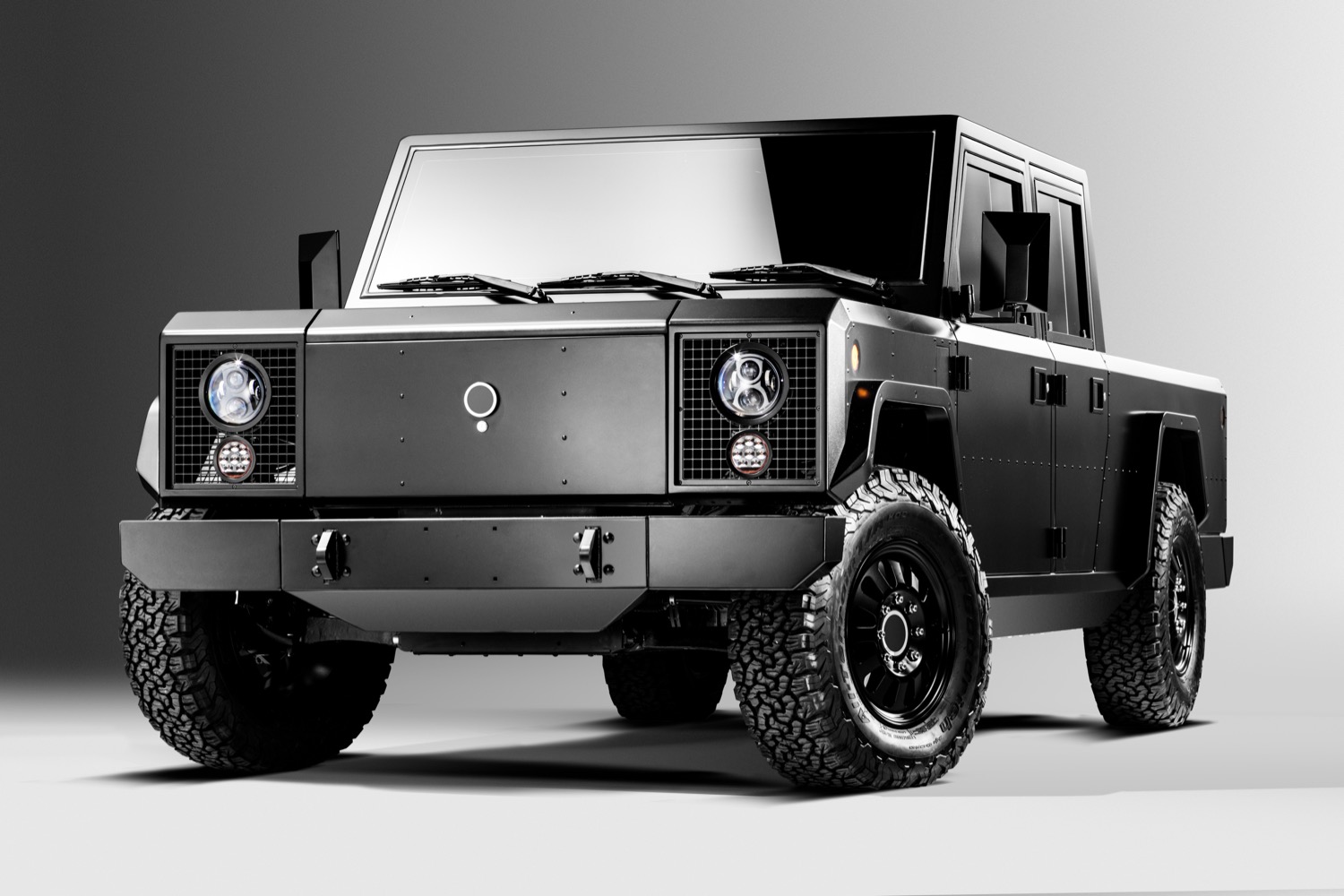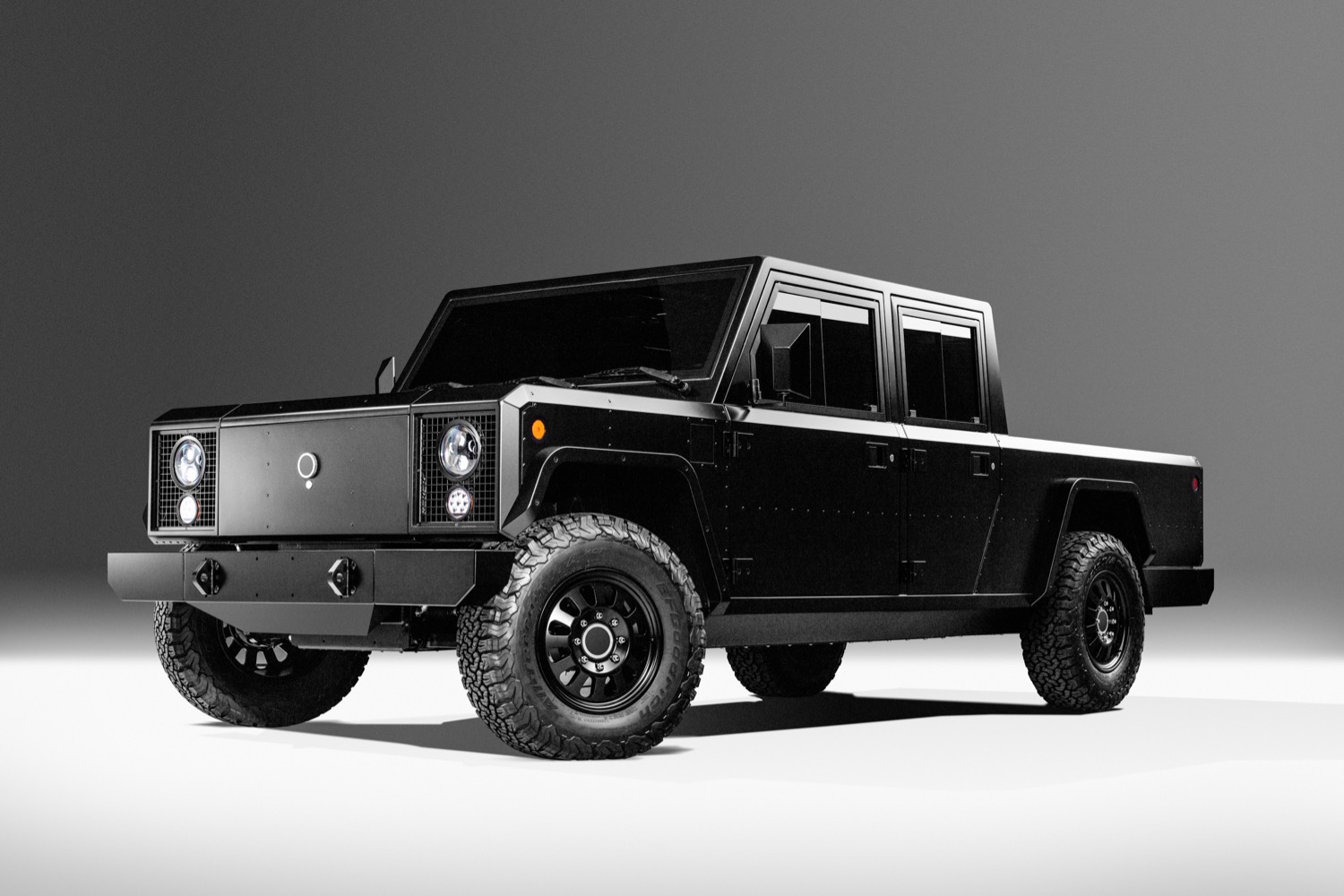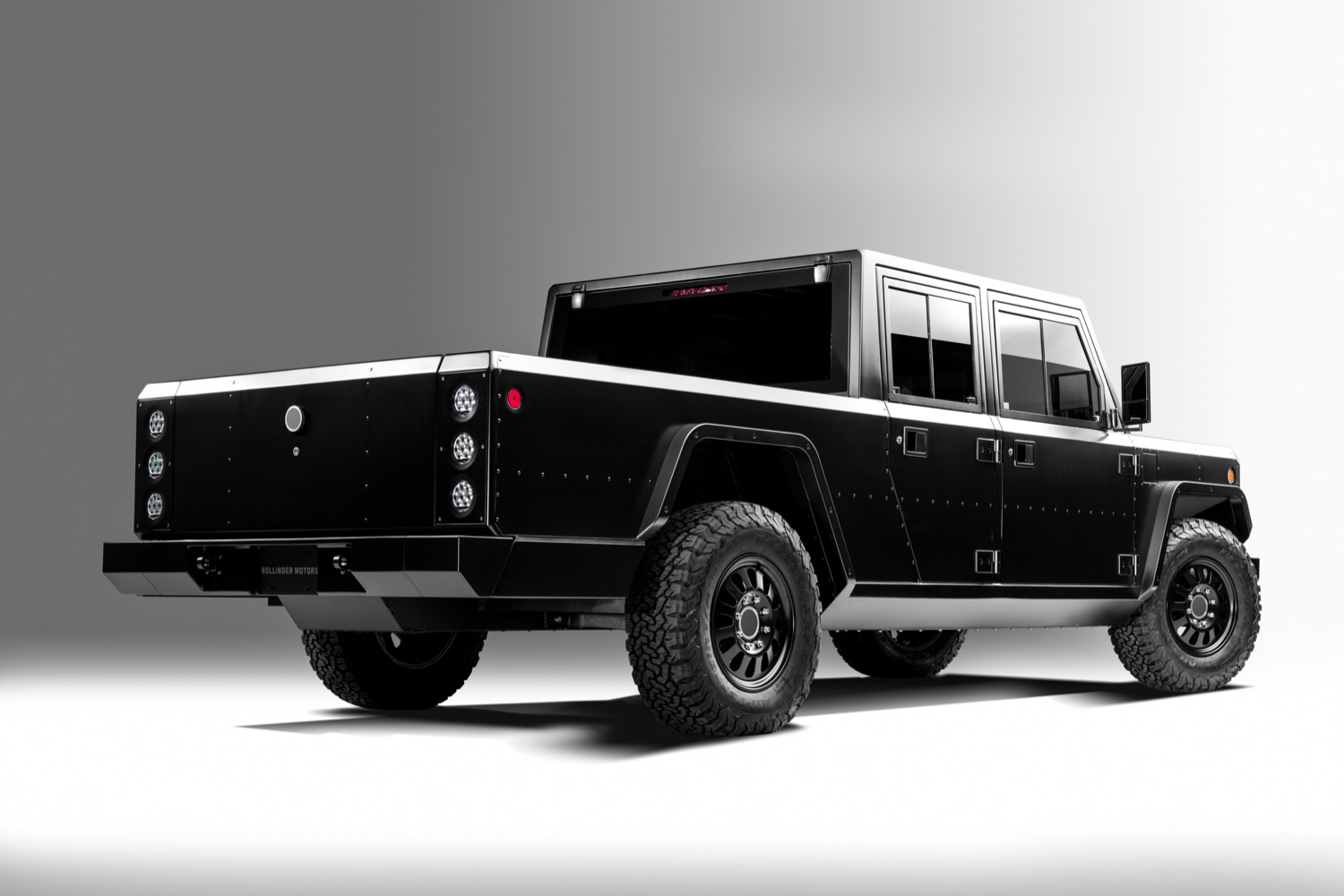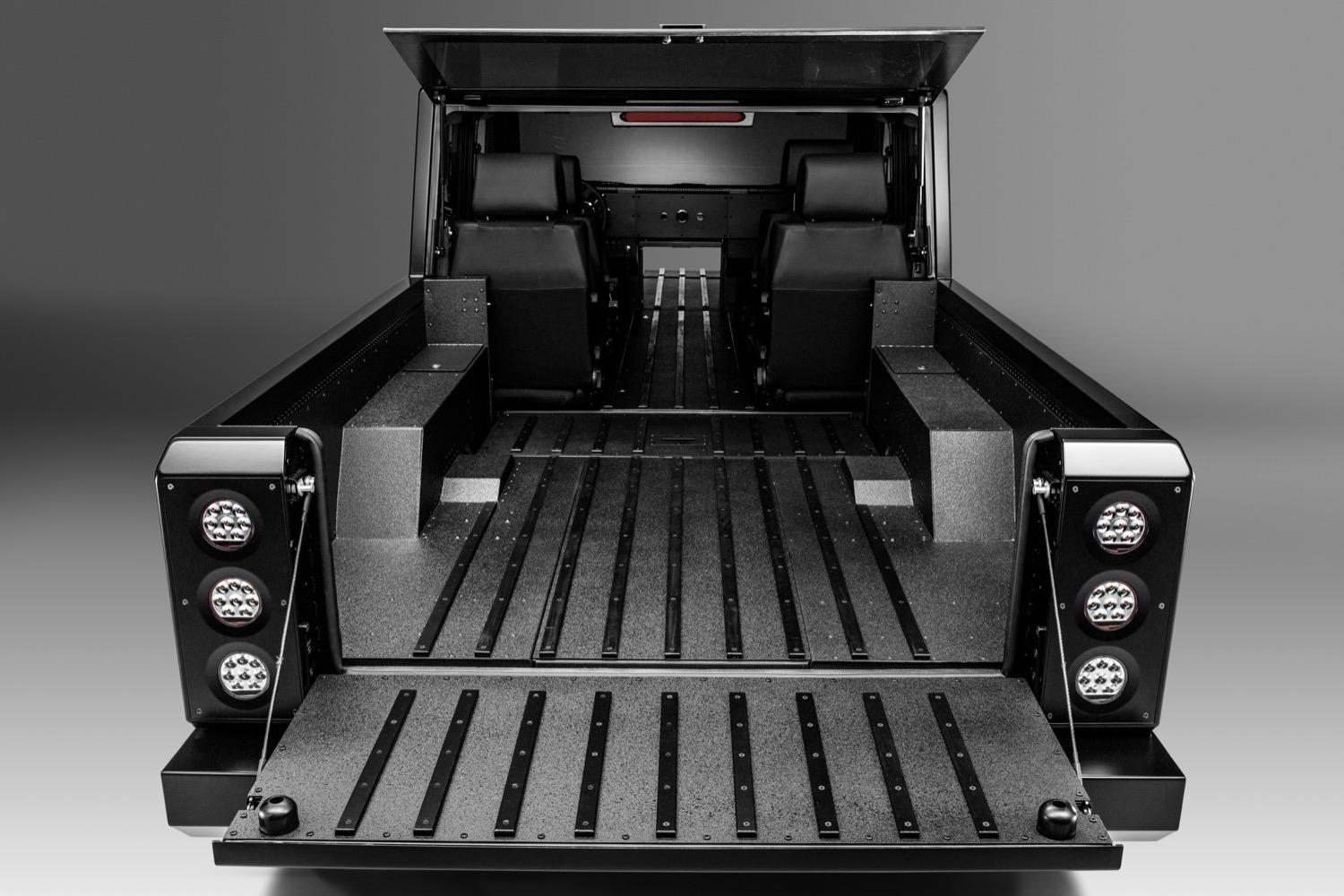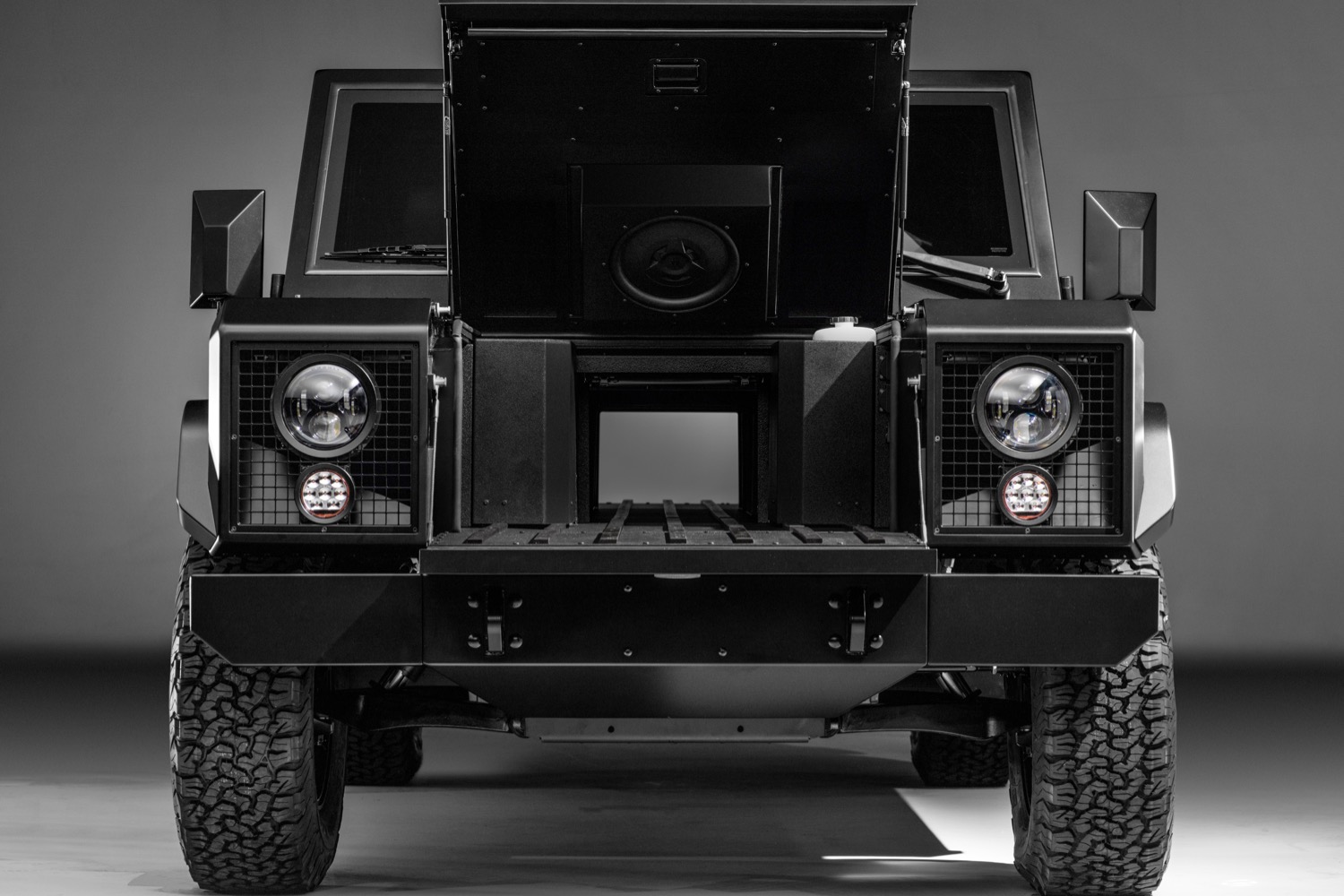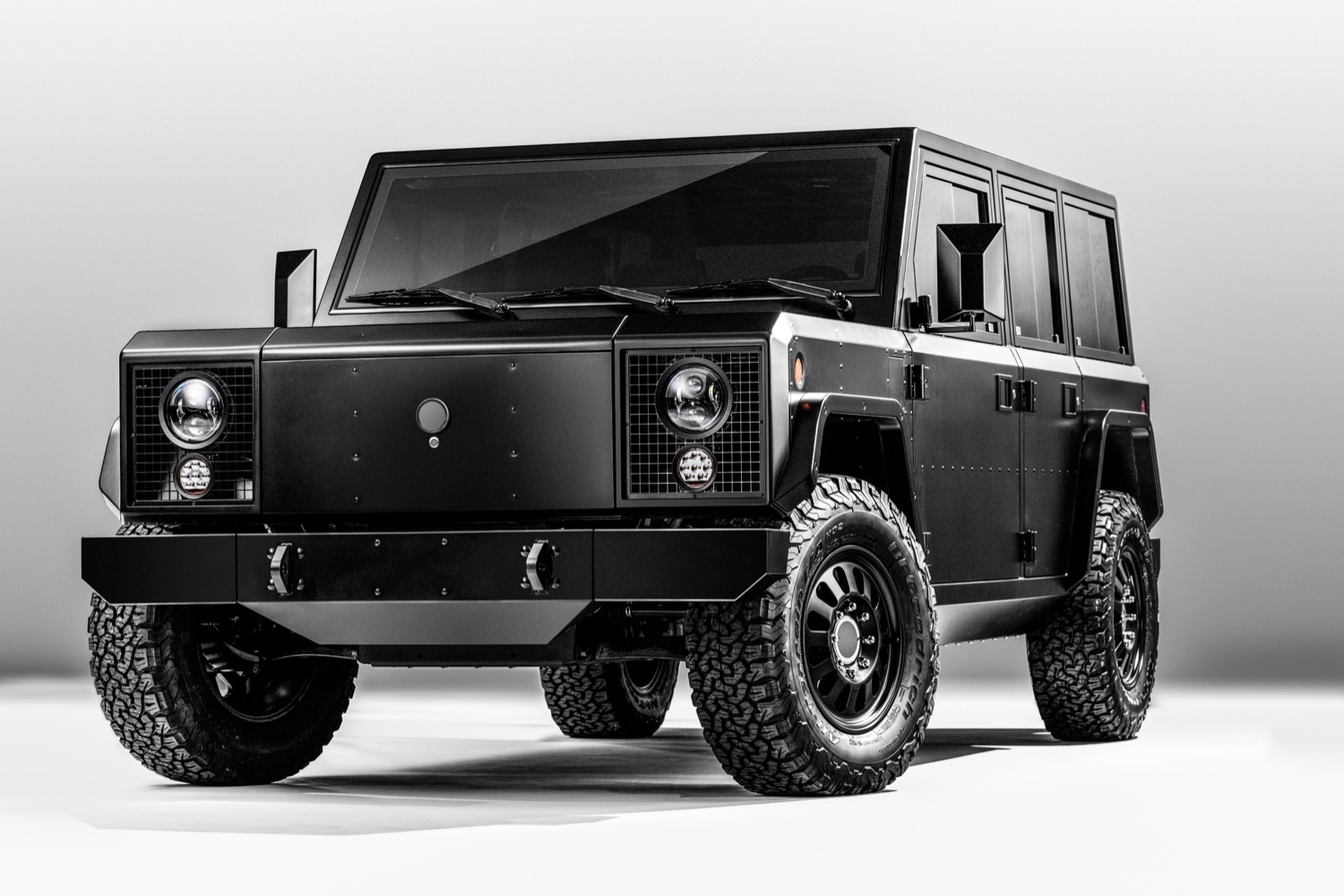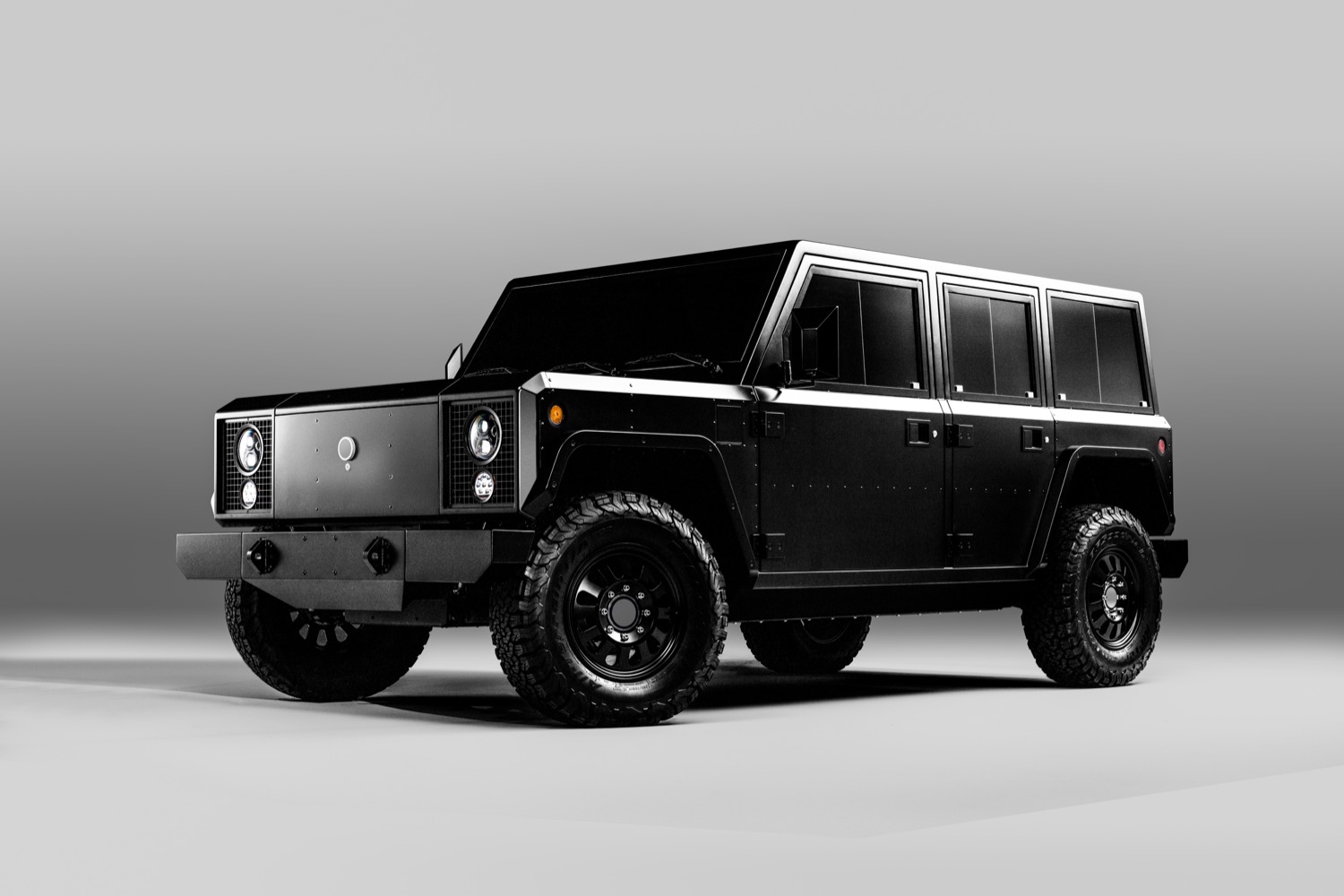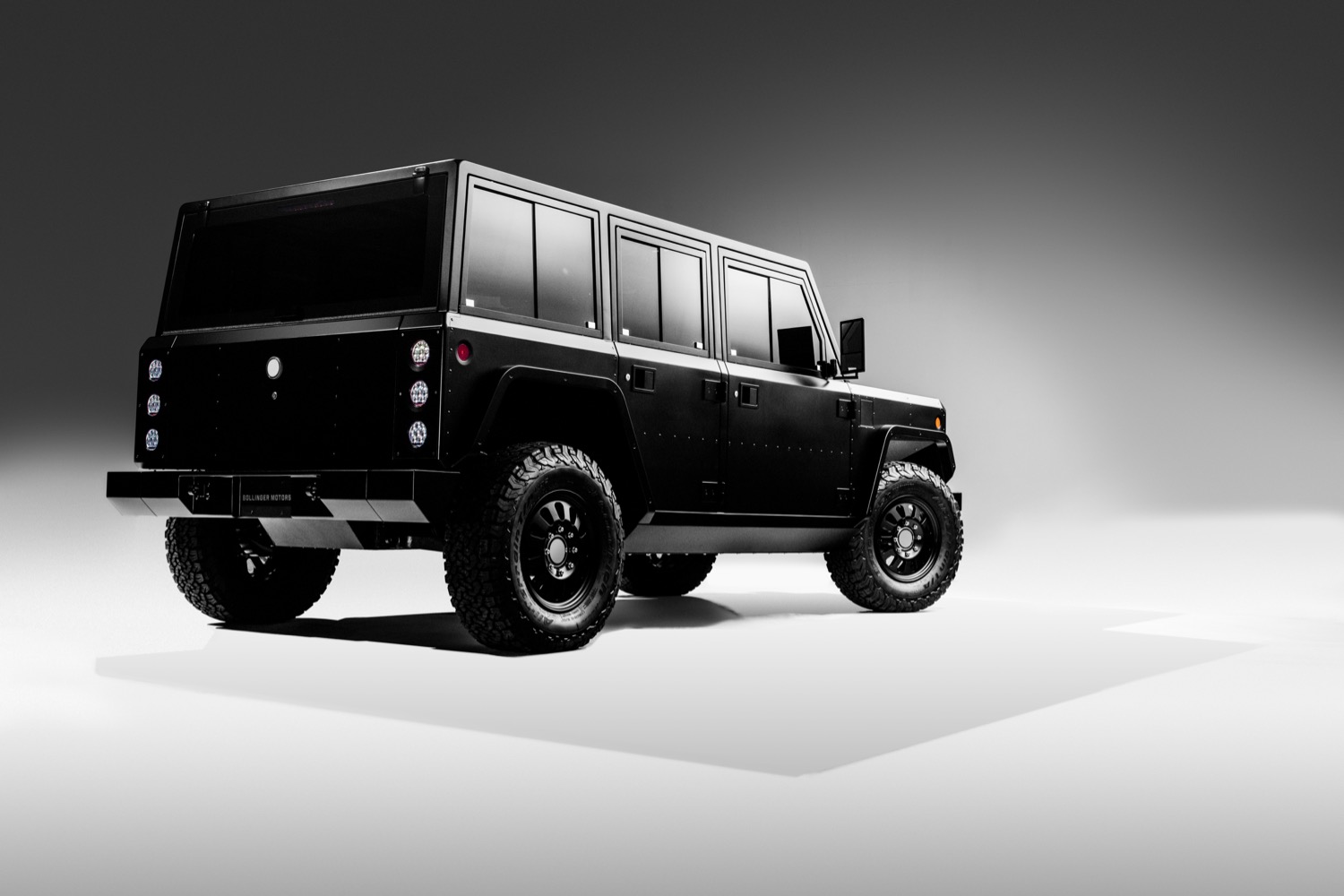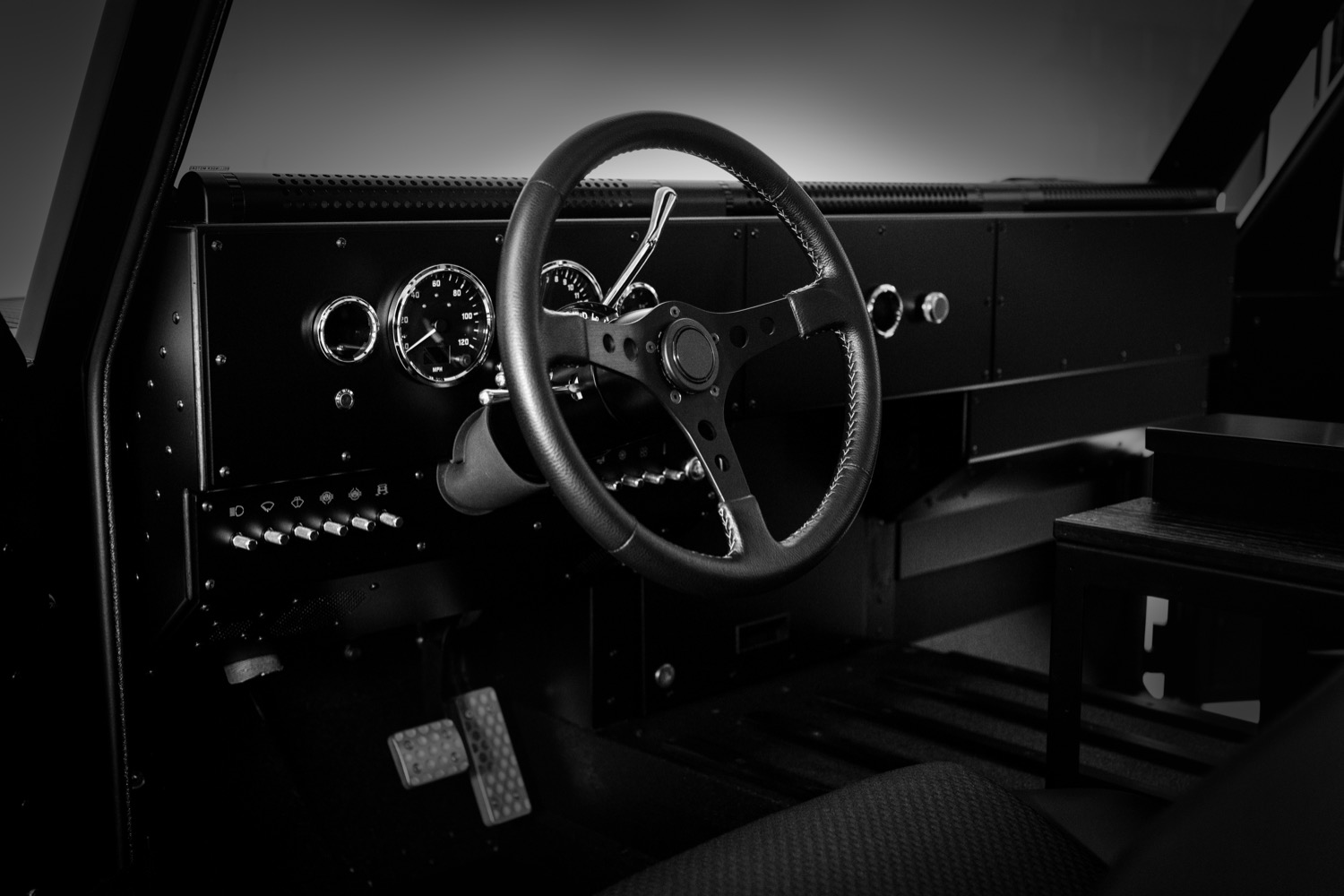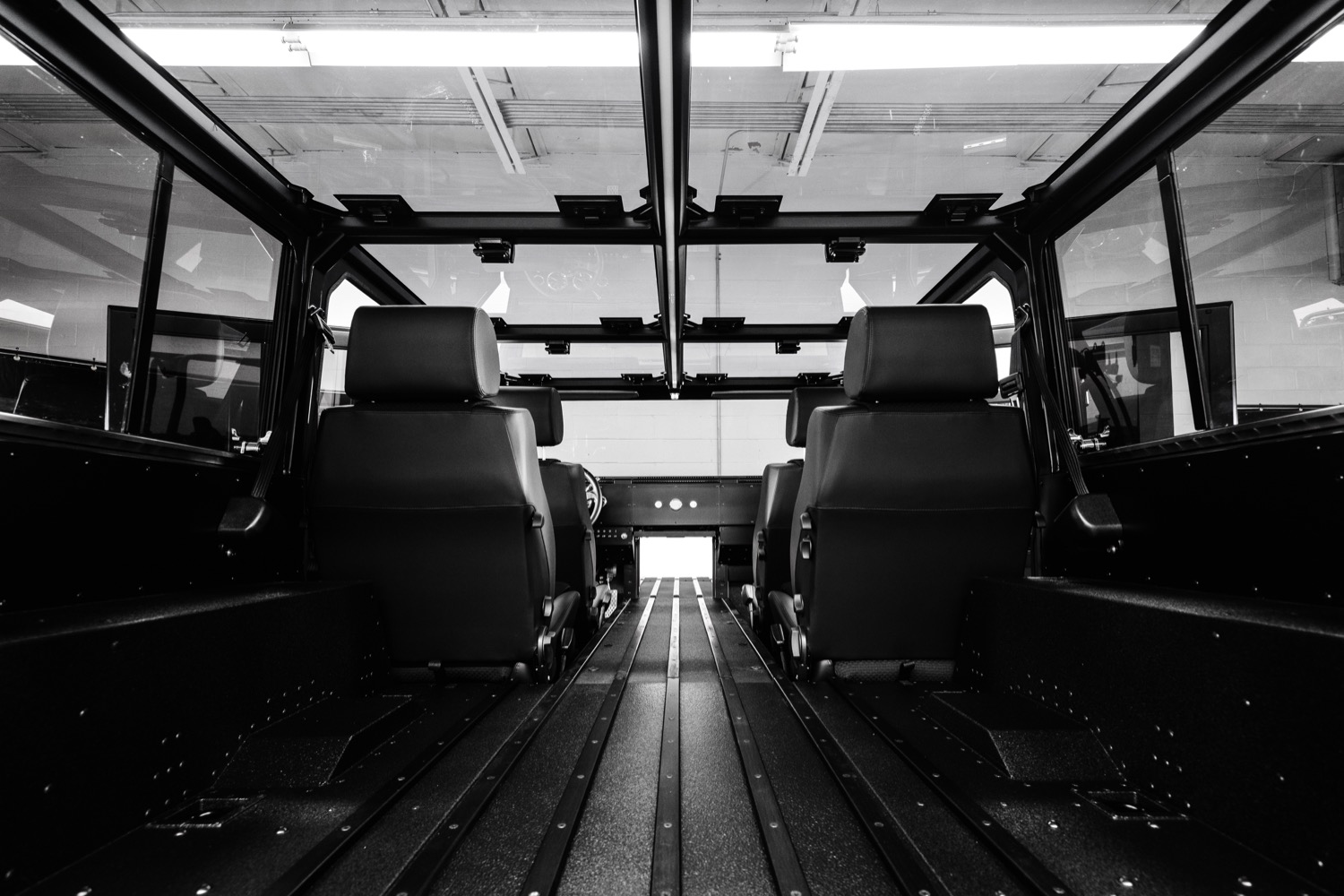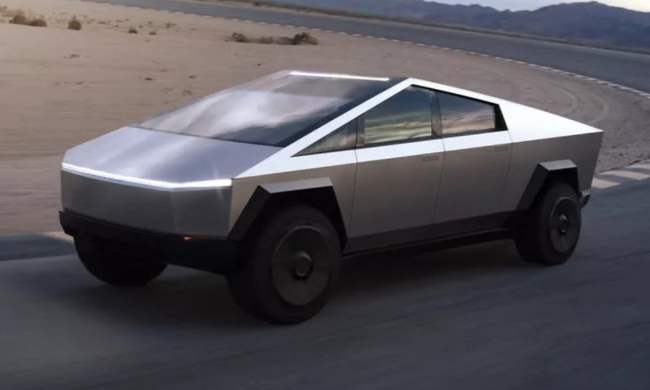Bollinger Motors wants to electrify one of the most fossil-fuel-dependent segments of the car market: off-roaders. It started its bold offensive when it revealed the B1, an SUV in the vein of the Land Rover Defender, and it later digitally unveiled a second model appropriately called B2. The company then went silent. Bollinger has now released what it calls “beta prototypes” of both vehicles, indicating that the company is still alive and well, and working to get its electric off-roaders into production.
The B2 pickup truck is an evolution of the B1, and the two models share a boxy, function-over-form design characterized by round headlights and flat body panels. Going electric allowed designers to carve out a 16-foot tunnel between the front and rear bumpers that makes hauling longer items — like lumber — a breeze. Alternatively, opening the separation between the passenger and cargo compartments clears up enough space for 72 sheets of half-inch-thick plywood. Unique in the industry, these clever features promise to give the B2 a sizable advantage over its future rivals, whether they run on electricity or gasoline. Stand-out features are key, because the segment is going to get crowded in record time.
Bollinger noted the B2 stretches 207 inches long, 77 inches wide, and 72 inches tall. These dimensions place it in the same arena as midsize trucks like the Toyota Tacoma, Jeep Gladiator, and the Ford Ranger. Ford is working on an electric version of its larger F-150 pickup truck, and Tesla has promised an electric pickup truck that will also likely be larger than the B2. Startup Rivian, which is backed by both Ford and Amazon, has its R1T pickup truck and R1S SUV. Both are a bit more luxurious than the Bollinger vehicles.
The specifications sheet lists a pair of electric motors — one mounted over each axle — that work together to deliver 614 horsepower and 668 pound-feet of torque, a significant increase over Bollinger’s original estimates of 520 hp and 514 lb-ft. They draw electricity from a massive, 120-kWh lithium-ion battery pack that provides at least 200 miles of range. To add context, the Audi E-Tron uses a 95-kWh battery while the biggest pack Tesla offers on the Model X is a 100-kWh unit.
With through-the-road all-wheel drive, Bollinger claims both the B1 and B2 take merely 4.5 seconds to reach 60 mph from a stop, and on to a top speed of 100 mph. When racing from stoplight to stoplight isn’t the order of the day, the trucks are capable of towing up to 7,500 pounds or hauling 5,000 pounds, according to Bollinger. Charging the battery pack requires 75 minutes when using a level-three fast charger, or 10 hours when the truck is plugged into a slower Level 2 charging station.
The Bollinger B1 and B2 aren’t ready for production yet, though. The trucks you see here are merely prototypes. Bollinger previously said that it was aiming to start production in 2020, and the company has started taking reservations. But as with all startups, Bollinger risks getting tripped up by the costly and complex process of turning a cool looking car into something people can actually buy.
Updated on September 26, 2019: Added the latest specifications and photos.
